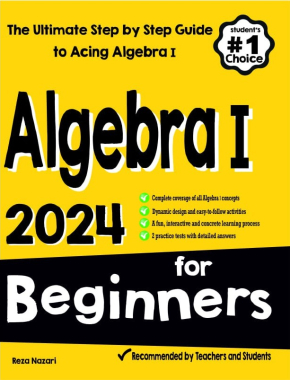How to Solve Probability Problems? (+FREE Worksheet!)
Do you want to know how to solve Probability Problems? Here you learn how to solve probability word problems.

Related Topics
- How to Interpret Histogram
- How to Interpret Pie Graphs
- How to Solve Permutations and Combinations
- How to Find Mean, Median, Mode, and Range of the Given Data
Step by step guide to solve Probability Problems
- Probability is the likelihood of something happening in the future. It is expressed as a number between zero (can never happen) to 1 (will always happen).
- Probability can be expressed as a fraction, a decimal, or a percent.
- To solve a probability problem identify the event, find the number of outcomes of the event, then use probability law: number of favorable outcometotal number of possible outcomes
The Absolute Best Books to Ace Pre-Algebra to Algebra II
Probability Problems – Example 1:
If there are 8 red balls and 12 blue balls in a basket, what is the probability that John will pick out a red ball from the basket?
Solution:
There are 8 red balls and 20 a total number of balls. Therefore, the probability that John will pick out a red ball from the basket is 8 out of 20 or 88+12=820=25.
Probability Problems – Example 2:
A bag contains 18 balls: two green, five black, eight blue, a brown, a red, and one white. If 17 balls are removed from the bag at random, what is the probability that a brown ball has been removed?
Solution:
If 17 balls are removed from the bag at random, there will be one ball in the bag.
The probability of choosing a brown ball is 1 out of 18. Therefore, the probability of not choosing a brown ball is 17 out of 18 and the probability of having not a brown ball after removing 17 balls is the same.
Exercises for Solving Probability Problems
The Best Book to Help You Ace Pre-Algebra
Solve.
- A number is chosen at random from 1 to 10. Find the probability of selecting a 4 or smaller.
- A number is chosen at random from 1 to 50. Find the probability of selecting multiples of 10.
- A number is chosen at random from 1 to 10. Find the probability of selecting of 4 and factors of 6.
- A number is chosen at random from 1 to 10. Find the probability of selecting a multiple of 3.
- A number is chosen at random from 1 to 50. Find the probability of selecting prime numbers.
- A number is chosen at random from 1 to 25. Find the probability of not selecting a composite number.
Download Probability Problems Worksheet

- 25
- 110
- 12
- 310
- 310
- 925
The Greatest Books for Students to Ace the Algebra
Related to This Article
More math articles
- Linear Differential Equations: Bridging Mathematics with Practical Applications
- Best equipment for online math teachers
- Journey to the Edge: A Meticulous Exploration of One-Sided Limits
- 10 Most Common 7th Grade Common Core Math Questions
- 6th Grade IAR Math FREE Sample Practice Questions
- Top 10 6th Grade SBAC Math Practice Questions
- Top 6 Travel-Friendly Teaching Supplies for your Portable Classroom
- 5th Grade ILEARN Math Worksheets: FREE & Printable
- How to Teach the GED Math Effectively: A Complete Guide!
- Using Number Line to Graph Percentages














What people say about "How to Solve Probability Problems? (+FREE Worksheet!) - Effortless Math: We Help Students Learn to LOVE Mathematics"?
No one replied yet.